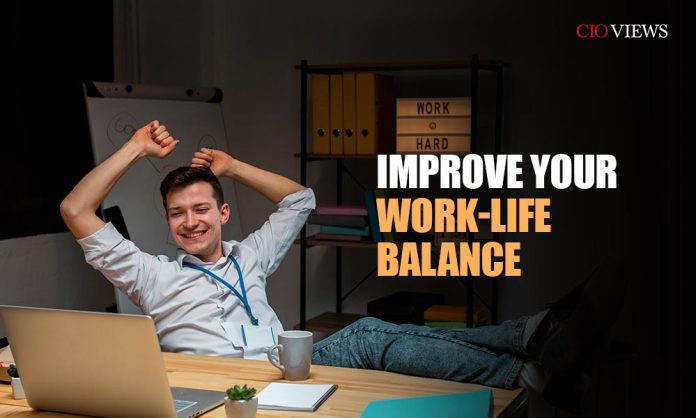Work-life balance isn’t just a buzzword. For CEOs and high-level executives, it’s a critical component of success. Long hours, constant decision-making, and high expectations can take a toll on both your productivity and personal life. Balancing professional demands with personal well-being isn’t easy, but it is possible.
In this article, CIO Views Magazine cover 5 strategies every CEO can implement to enhance their work-life balance.
Strategy 1: Prioritize Time Management
Time management is one of the most powerful tools in a CEO’s toolkit. By structuring your day effectively, you can make sure you’re not only hitting your business goals but also maintaining personal time for rest and rejuvenation.
Start by organizing your tasks based on urgency and importance. Consider using techniques like the Eisenhower Matrix or time-blocking to prioritize your day. This allows you to allocate specific times for work, meetings, and personal activities, ensuring that nothing is neglected.
Consider also limiting the time you spend on emails and meetings. Batch your tasks into focused blocks, leaving ample time for other responsibilities, including time for exercise, hobbies, or family. The less time you waste on non-essential tasks, the more time you’ll have for yourself.
Strategy 2: Set Boundaries Between Work and Personal Life
One of the most challenging aspects of being a CEO is learning how to shut off. The boundary between work and home life often blurs, especially when you’re constantly thinking about the next business challenge. Setting clear boundaries, both for yourself and your team, is key to achieving a balance.
Start by designating specific work hours. Once those hours are over, disconnect from work. Let your team know when you’re available and when you’re off-duty. This helps manage their expectations and protects your personal time.
Also, create physical and mental boundaries. When you’re at home, try to avoid checking emails or working on business projects. Your home should be a place to unwind, not an extension of your office. If you’re on vacation, resist the urge to check in with the office constantly. Give yourself permission to disconnect.
Strategy 3: Delegate and Trust Your Team
As a CEO, it’s tempting to micromanage every part of the business, but this is a surefire path to burnout. Learning to delegate effectively is crucial for your well-being and your company’s growth. By entrusting your team with responsibility, you free up time for other priorities.
Effective delegation involves not just assigning tasks but trusting your team to execute them. Be clear about expectations, but also give them the autonomy to make decisions. This not only improves efficiency but boosts your team’s morale and engagement as well.
Delegating doesn’t mean stepping away from leadership. It means empowering your team members to take ownership of tasks that align with their strengths. This helps to lighten your workload and allows you to focus on high-level strategy.
Strategy 4: Take Regular Breaks and Downtime
It’s easy to think that skipping breaks will make you more productive, but in reality, working non-stop leads to fatigue and burnout. Taking regular breaks is not only necessary for your mental and physical well-being, it also boosts creativity and decision-making.
Use techniques like the Pomodoro method, where you work for 25 minutes and then take a 5-minute break. Longer breaks, such as a lunch break away from your desk, can help reset your focus for the afternoon. Incorporate time for relaxation, even during your busiest days.
Vacations and time off are also vital. You may feel guilty about stepping away, but allowing yourself to fully disconnect from work will help you come back with renewed energy, clearer focus, and better ideas.
Strategy 5: Maintain Healthy Habits and Self-Care
Your body and mind are your greatest assets. Without proper care, your effectiveness as a CEO diminishes. Maintaining a healthy lifestyle should be a non-negotiable part of your routine.
Start with regular exercise. It doesn’t have to be intense; even a daily walk can reduce stress and improve your mood. Eating a balanced diet and getting enough sleep are equally important. When you’re well-rested and nourished, your brain functions at its peak.
In addition to physical health, make time for mental health practices such as meditation, journaling, or spending time with loved ones. CEOs often face immense stress, so it’s vital to manage that pressure proactively. Mental clarity leads to better decision-making and improved leadership.
Conclusion
Work-life balance is not something that happens by chance, especially among CEOs. But with intention and discipline, you can create a routine that promotes both professional success and personal fulfillment. Begin by prioritizing time management, creating boundaries, delegating, taking breaks, and highlighting self-care. Integrating these strategies into your daily life will help you become a more effective leader while also improving your overall well-being. Take action right now to achieve the balance you need to thrive.





